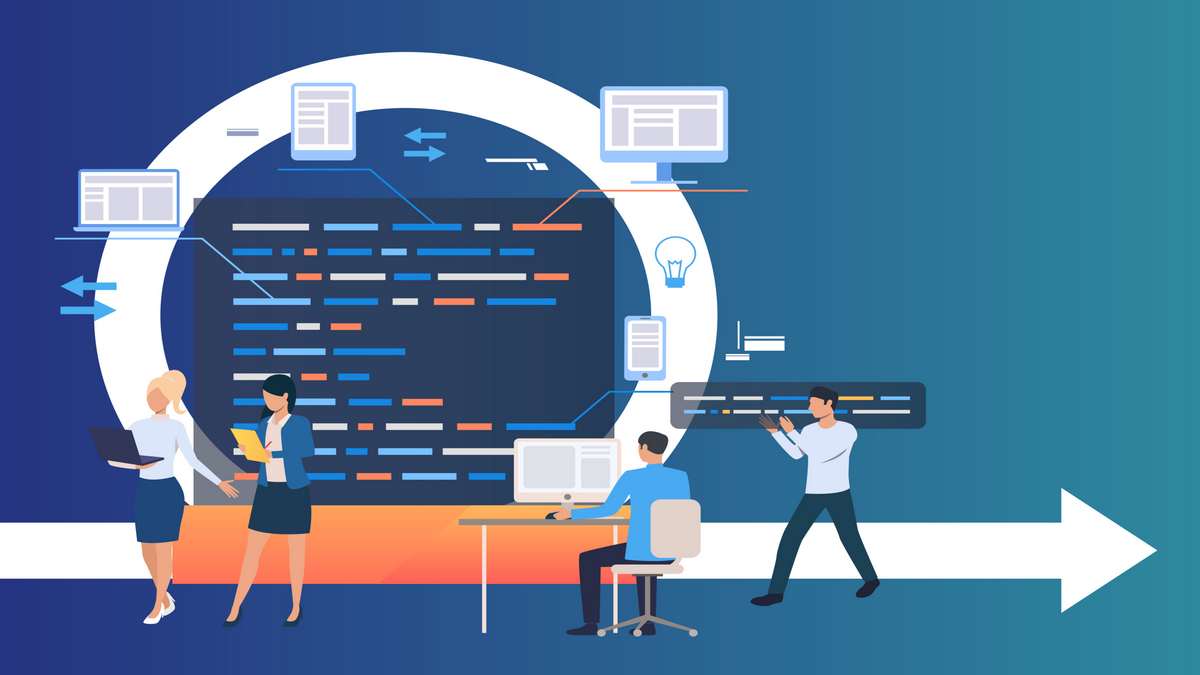
Data is becoming increasingly important in our digital world. Businesses of all sizes are collecting data on their customers and using it to improve their products and services. But what exactly is big data, and how can businesses use it to their advantage? In this blog post, we will explore the trends of big data development. We will look at how businesses are collecting and storing data, as well as how they are using it to improve their operations. By understanding these trends, you will be better equipped to take advantage of big data consulting services in your own business.
What is Big Data?
Big data is a term that describes the large volume of data – both structured and unstructured – that inundates a business on a day-to-day basis. But it’s not just the amount of data that’s important. It’s also the speed at which it arrives and grows, as well as the variety of sources that it comes from.
All of this data presents a challenge for organizations who must now figure out how to collect, manage, and most importantly, make sense of all this information. That’s where big data comes in. Big data is the term used to describe the tools and technologies needed to deal with large volumes of data.
The Evolution of Big Data
Big data has come a long way since its humble beginnings in the early 2000s. In the early days, big data was primarily used by large organizations to process and analyze large sets of data. However, over time, big data has become more accessible and affordable for smaller businesses and organizations.
Today, big data is used for a variety of purposes, including marketing, customer service, and even crime prevention. And as the technology continues to evolve, so too do the ways in which big data can be used.
As we move into the future, it’s likely that big data will continue to play an increasingly important role in our lives and businesses. So what can we expect from the evolution of big data? Here are a few trends to keep an eye on:
- More real-time analysis: Big data is often used to retrospectively analyze past events. However, there is an increasing demand for real-time analysis of big data sets. This could be used for things like detecting fraudulent activity or identifying opportunities and trends as they happen.
- Increased use of artificial intelligence: Artificial intelligence (AI) is already being used to help make sense of large data sets. As AI technology continues to evolve, we can expect it to play an even bigger role in helping us make sense of big data.
- Greater focus on security: As more and more organizations rely on big data, security becomes a greater concern. We can expect to
The Current State of Big Data
The big data trend has been developing for years now and it seems that the current state of big data is only getting stronger. Big data is being used in a number of industries to help organizations make better decisions, optimize processes, and improve customer experiences.
There are still some challenges that need to be addressed in order for big data to reach its full potential. For example, data quality and governance are two areas that need to be improved in order for big data to be truly useful. Additionally, the skills gap is another challenge that needs to be addressed. Despite these challenges, the current state of big data is very strong and it is only going to continue to grow in the coming years.
Challenges of big data development
There are many challenges associated with developing big data solutions. One challenge is the sheer volume of data that must be processed. Another challenge is the variety of data types that must be processed, including structured, unstructured, and semi-structured data. Yet another challenge is the speed at which data must be processed in order to meet business needs.
Still, other challenges include the need to provide security and privacy for big data solutions, as well as the need to ensure that big data solutions are scalable and reliable. Meeting all of these challenges can be a daunting task for organizations, but it is one that is essential if they want to take advantage of all that big data has to offer.
The Future of Big Data
There is no doubt that Big Data is here to stay. The question is: what will the future of Big Data look like? Here are some trends that we think will shape the future of Big Data:
- Increased focus on data quality and governance. As organizations increasingly rely on Big Data for decision-making, there will be a greater emphasis on ensuring that the data is of high quality and properly managed.
- More real-time and streaming data analytics. With the proliferation of sensors and devices, there will be an explosion of real-time data that needs to be analyzed. This will require new tools and techniques for dealing with streaming data.
- Greater use of artificial intelligence and machine learning. As Big Data gets bigger and more complex, traditional methods of analysis will become insufficient. AI and machine learning will be used more frequently to glean insights from data.
- More personalization and customization. With the rise of big data comes the ability to better understand individual preferences and tailor content and experiences accordingly. Expect to see more personalized recommendations, ads, and even products in the future.
- Increased use of predictive analytics. Big Data analytics can not only tell us what has happened in the past but also give us insights into what is likely to happen in the future. Predictive analytics will become increasingly important as organizations try to stay ahead of the competition
Big Data development: How to make it work for your business
Big data analysis and management are becoming the need of the hour for businesses to make impactful decisions and tailor their operations. To enhance the process, enterprises can integrate NLP models with their data management systems to ensure accurate data collection at all stages. Using KNN algorithm systems alongside will help decrease the chances of missed data and vulnerabilities and improve data collection for corporate decision-making.
Big data is becoming increasingly important for businesses across a variety of industries. As the volume and variety of data continue to grow, it can be difficult to make sense of it all and harness its power to improve your business. Big data development services like vitechteam.com can help you build the infrastructure and applications you need to make big data work for your business.
There are a few key things to keep in mind when developing a big data solution for your business:
- Understand your data. The first step is to understand what data you have and what it can tell you about your business. This will help you determine what kinds of insights you can gain from your data and how you can use it to improve your business.
- Choose the right platform. There are a number of different big data platforms available, so it’s important to choose one that will fit well with your existing IT infrastructure and provide the features and functionality you need.
- Build scalable solutions. As your big data needs grow, your solutions need to be able to scale with them. This means planning for growth from the start and designing solutions that can easily be expanded as needed.
- Secure your data. With the sensitive nature of some big data, security is a top concern. Make sure your solutions are designed with security in mind, from the ground up
Conclusion
Data is becoming increasingly important in today’s world, and the trend of big data development is only going to continue. As more and more businesses begin to realize the value of data, they will invest more in tools and resources to collect and analyze it. This will lead to even more advances in big data technology, which will benefit everyone who uses it.



